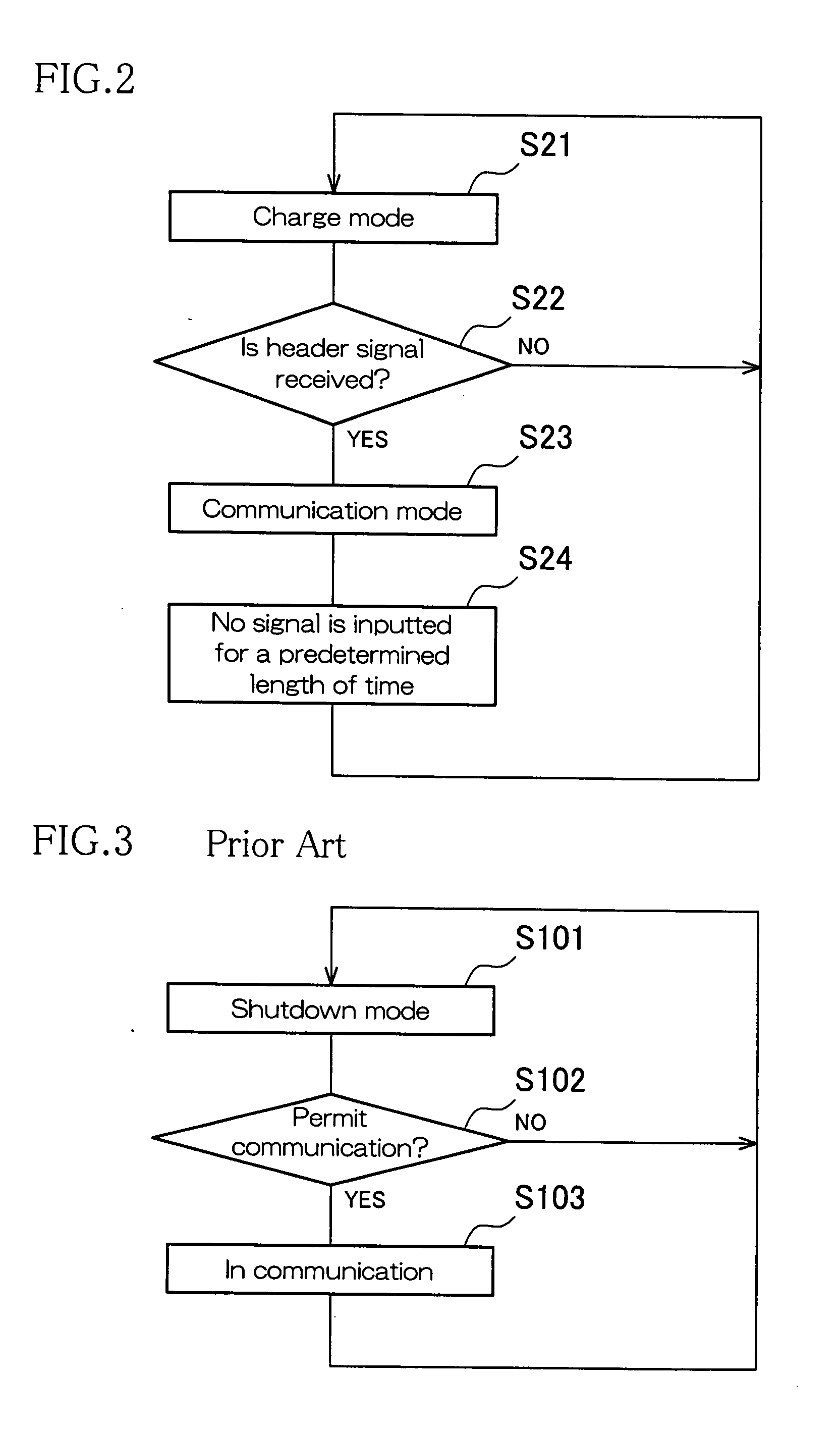Optical wireless communication device
a wireless communication and optical technology, applied in the field of optical wireless communication devices, can solve the problems of increasing power consumption, difficult to satisfy these contradictory requirements, and reducing the power consumption of the device only slightly, so as to achieve the effect of efficient power us
- Summary
- Abstract
- Description
- Claims
- Application Information
AI Technical Summary
Benefits of technology
Problems solved by technology
Method used
Image
Examples
Embodiment Construction
[0041]Hereinafter, an embodiment of the present invention will be described in detail with reference to the accompanying drawings.
[0042]FIG. 1 is a block diagram schematically showing an optical wireless communication device according to an embodiment of the present invention. The optical wireless communication device of this embodiment is mounted in, for example, a cell phone and is used to communicate small-volume text data (e.g., telephone numbers, e-mail addresses) with other piece(s) of equipment.
[0043]This optical wireless communication device includes a light-receiving element 11, a signal selecting unit 12, a signal processing unit 13 and a charging element 14. The light-receiving element 11 receives an optical communication signal emitted from other piece(s) of equipment. The signal selecting unit 12 receives a received light output of the light-receiving element 11 and outputs the received light output to either the signal processing unit 13 or the charging element 14. The...
PUM
 Login to View More
Login to View More Abstract
Description
Claims
Application Information
 Login to View More
Login to View More - R&D
- Intellectual Property
- Life Sciences
- Materials
- Tech Scout
- Unparalleled Data Quality
- Higher Quality Content
- 60% Fewer Hallucinations
Browse by: Latest US Patents, China's latest patents, Technical Efficacy Thesaurus, Application Domain, Technology Topic, Popular Technical Reports.
© 2025 PatSnap. All rights reserved.Legal|Privacy policy|Modern Slavery Act Transparency Statement|Sitemap|About US| Contact US: help@patsnap.com



